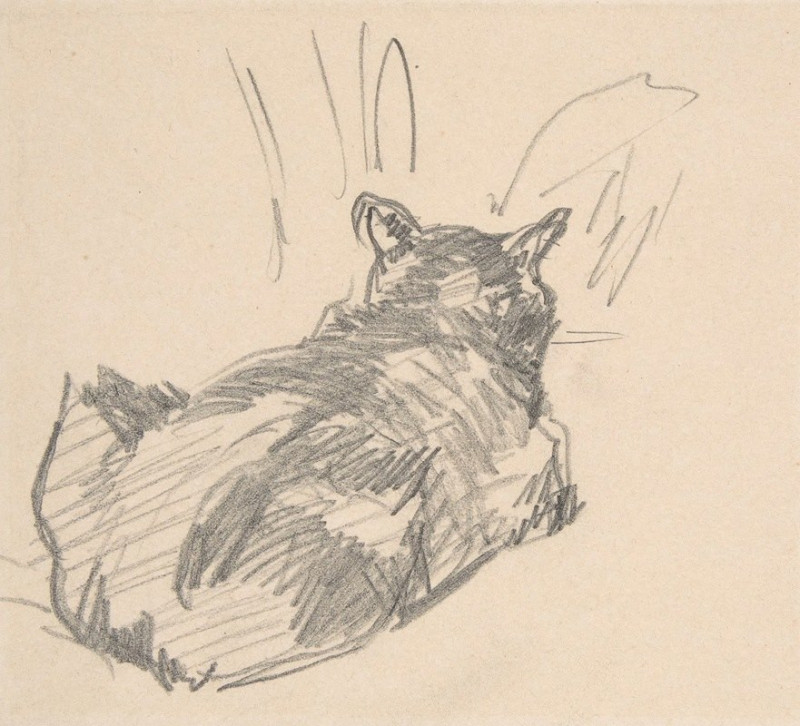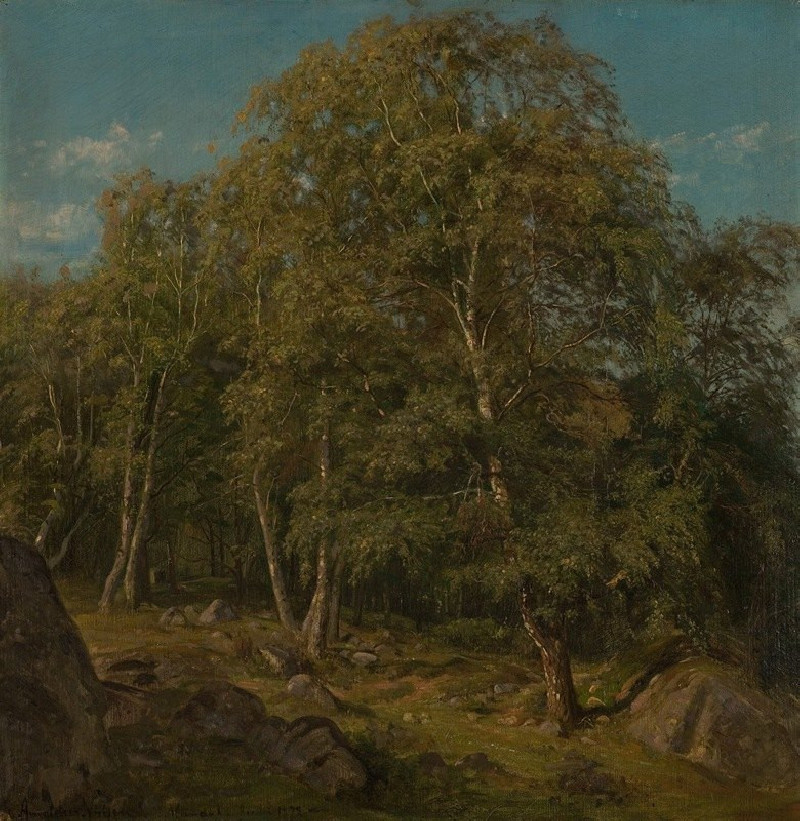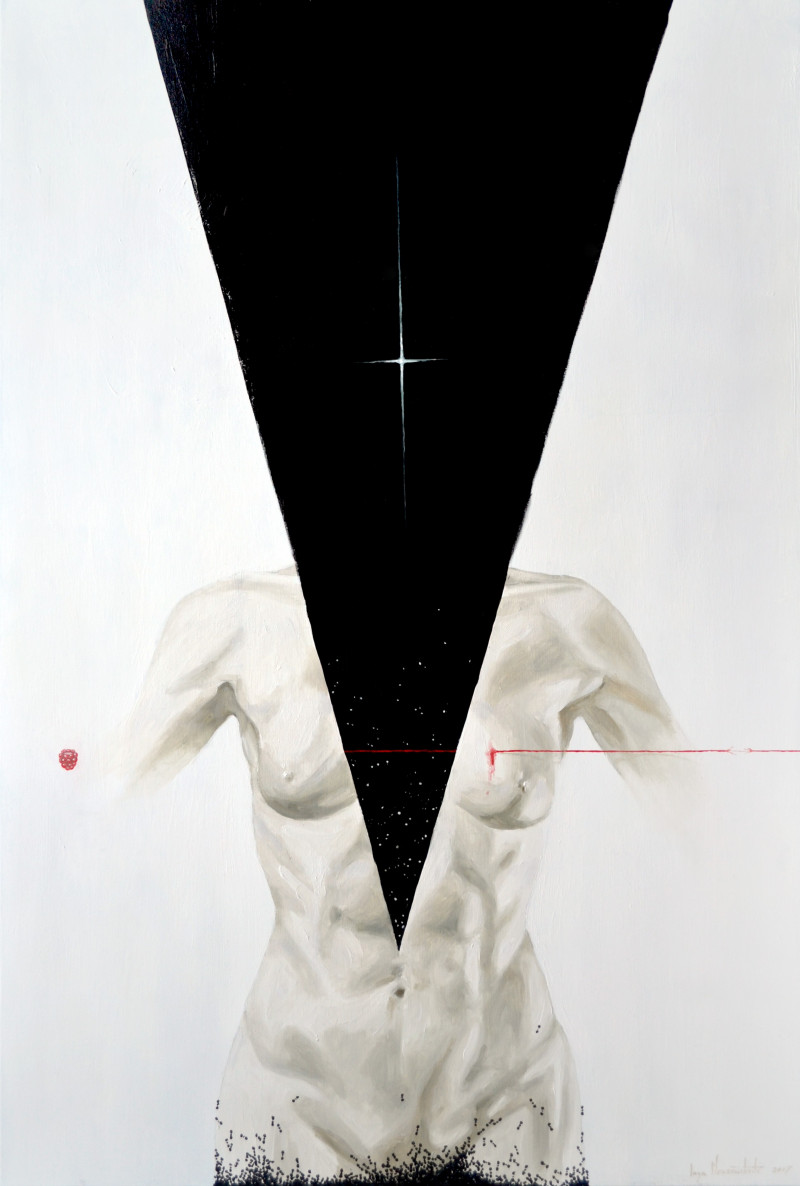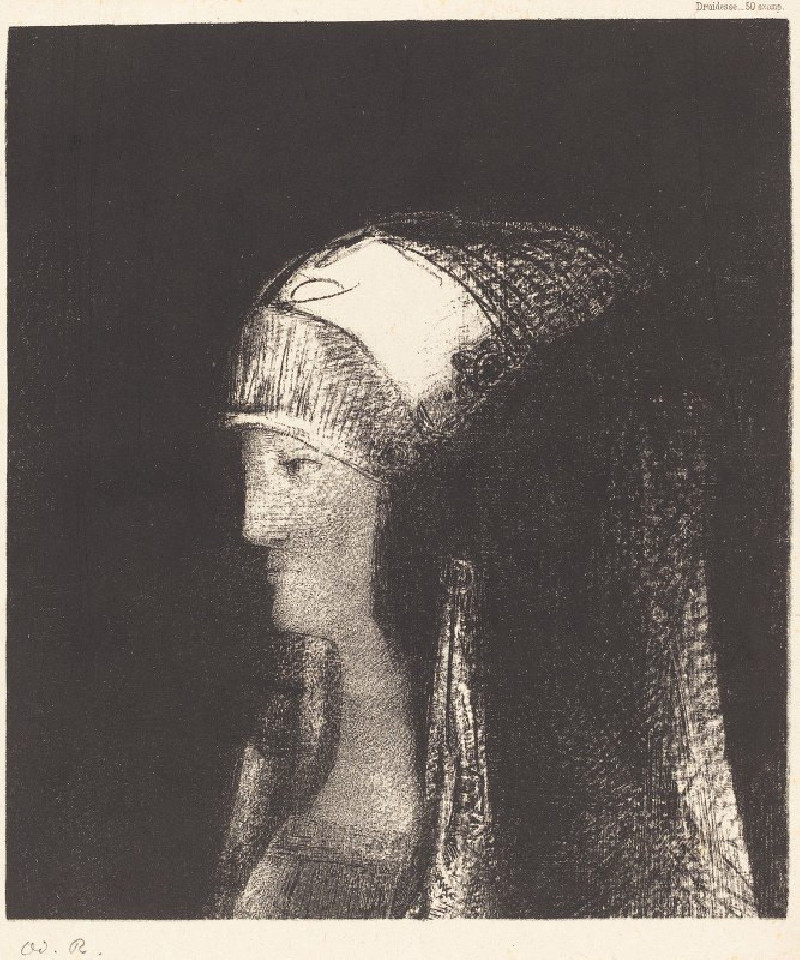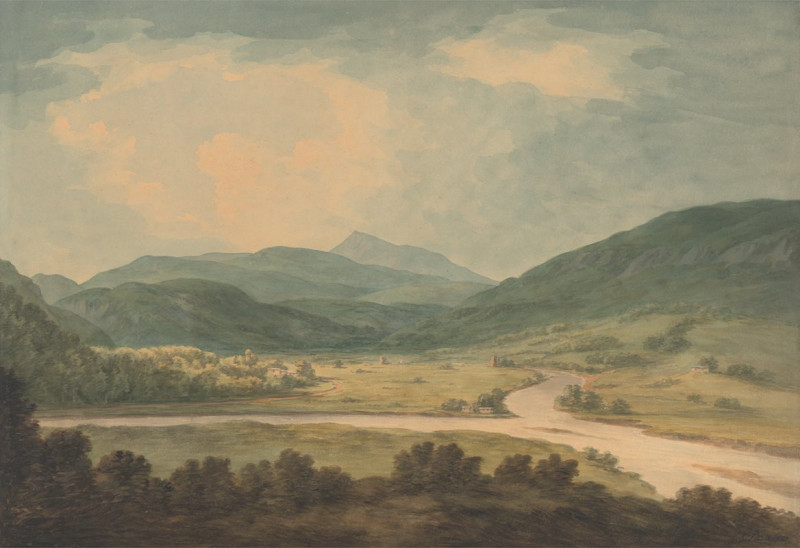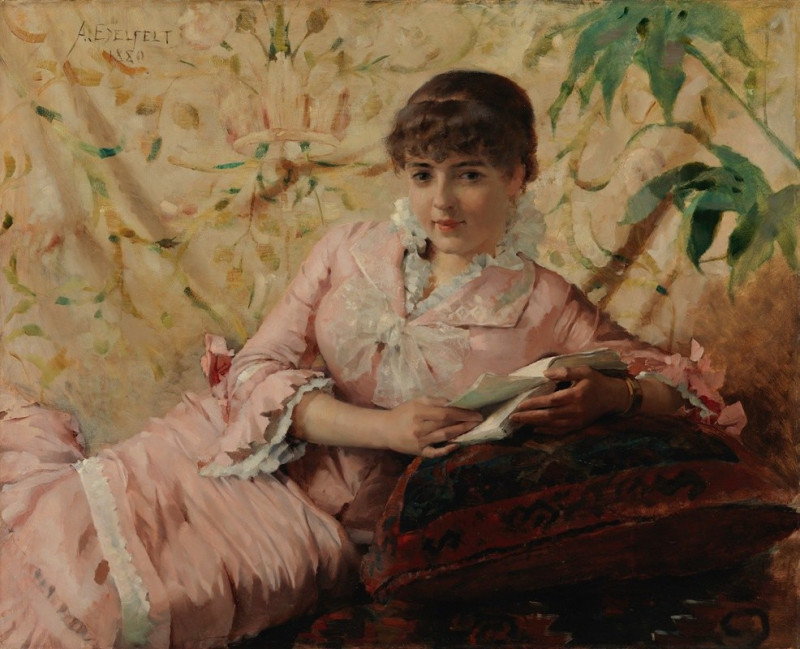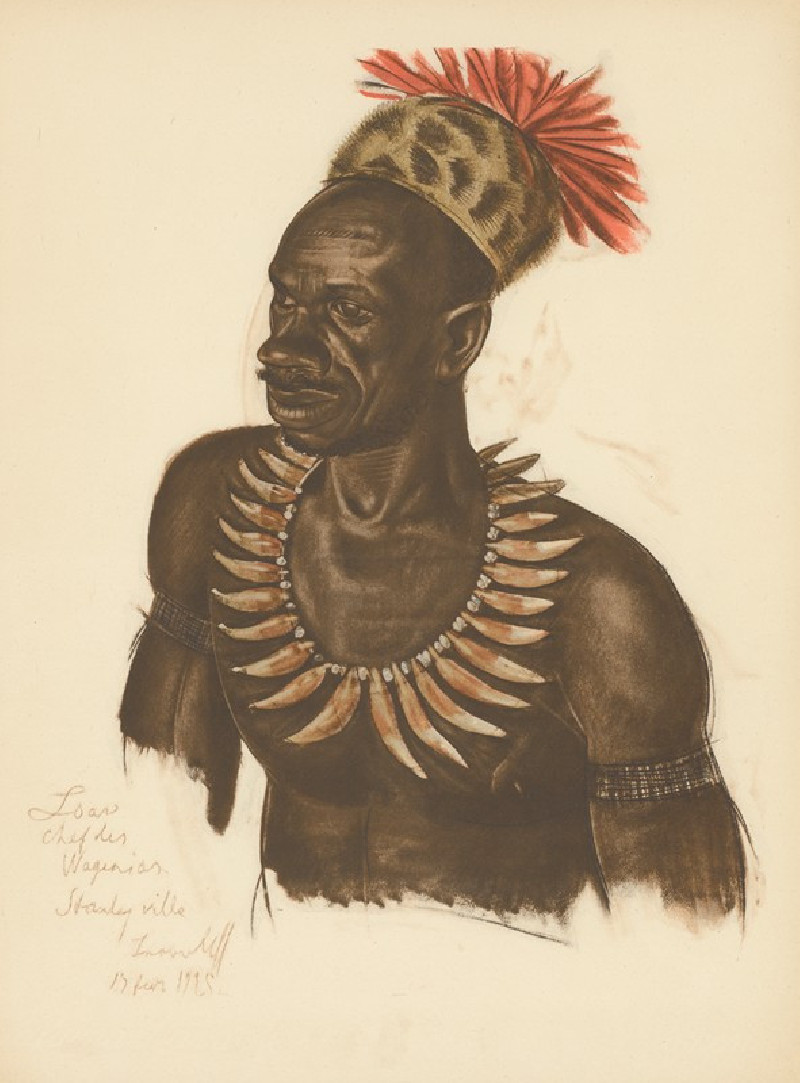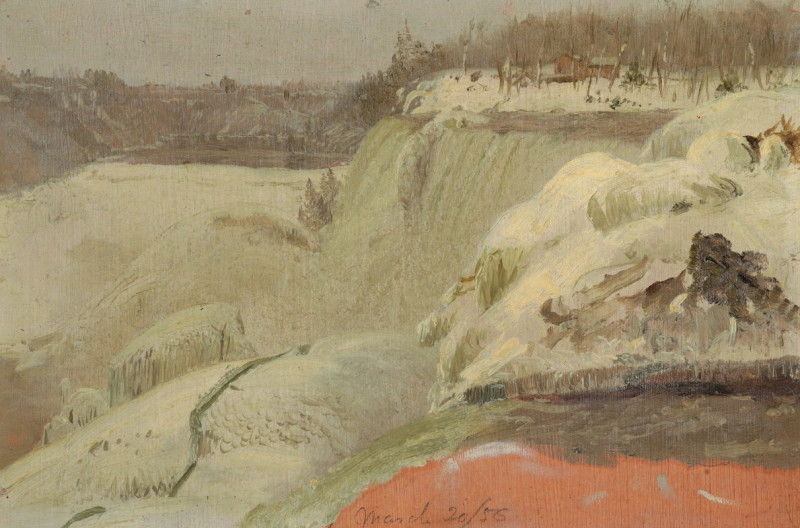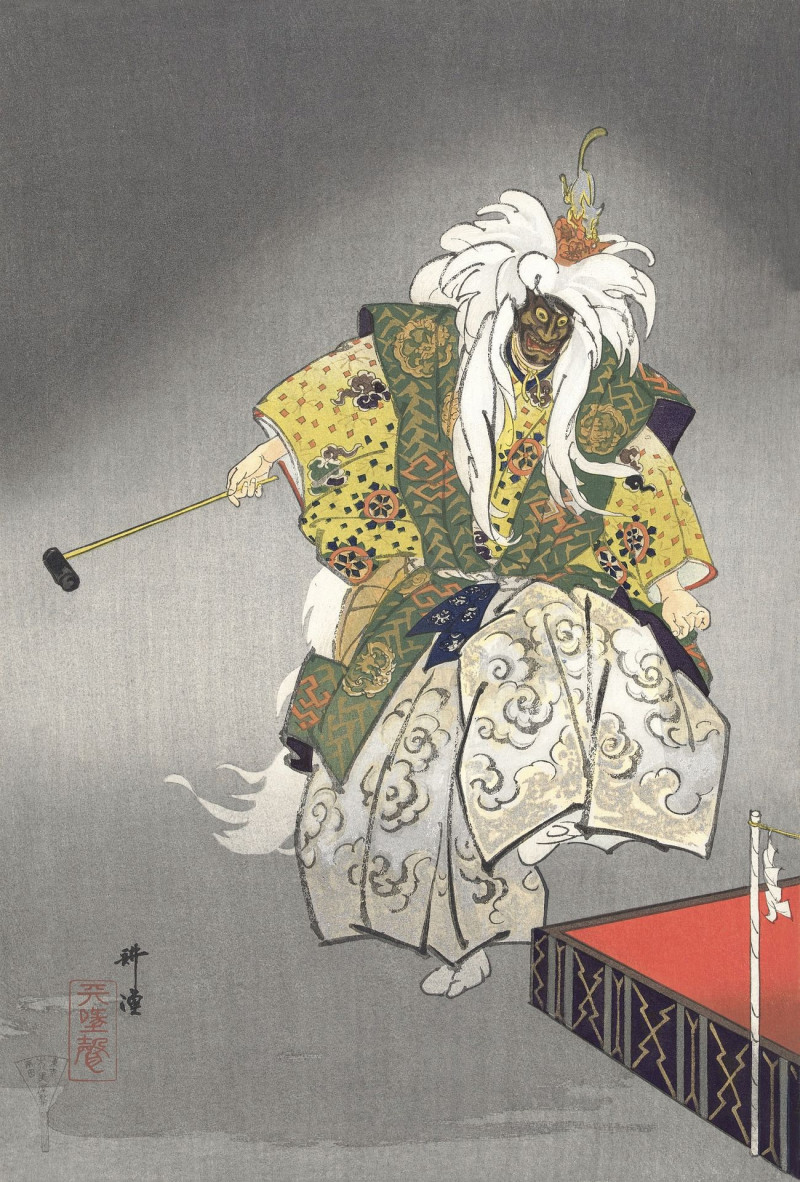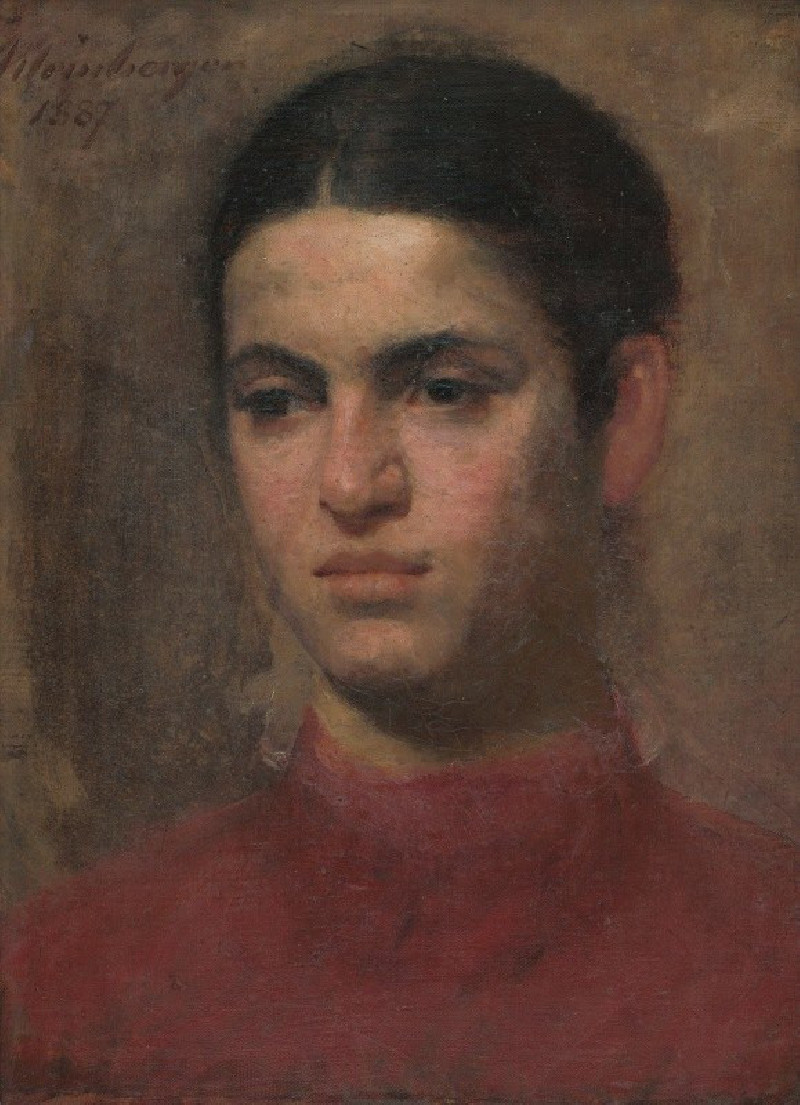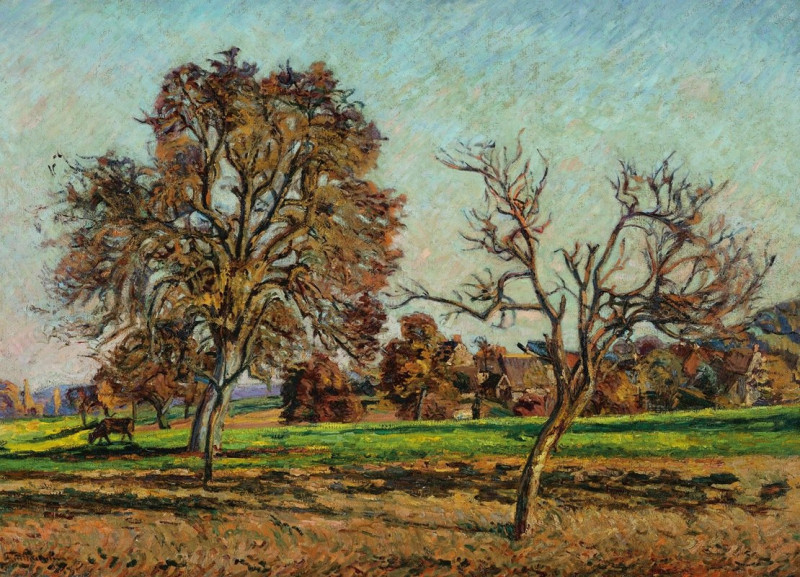A Cat Resting on All Fours, Seen from Behind (1861)
Technique: Giclée quality print
Recommended by our customers
More about this artwork
This intriguing sketch titled "A Cat Resting on All Fours, Seen from Behind" is one of the lesser-known yet captivating works by the acclaimed French artist Édouard Manet from the year 1861. Renowned for his pivotal role in the transition from Realism to Impressionism, Manet here captures the essence of a moment frozen in time with artistic subtlety and affection for his subject.The sketch presents a cat, observed from a rear angle, seated in a relaxed pose. The strokes are lightly yet confidently applied, indicating the texture of the cat's fur and the contours of its back and ears. The simplicity of the setting focuses the viewer's attention entirely on the form and posture of the feline, making it a study of calm repose and natural beauty.Rendered in charcoal, Manet utilizes soft shades and fluid lines to convey not just the physical attributes of the cat, but also a sense of the animate and restful life it embodies. This piece, devoid of elaborate background or coloration, shines a spotlight on the mundane yet graceful aspects of everyday life."A Cat Resting on All Fours, Seen from Behind" stands out as an example of Manet’s skill in using quick, effective strokes to capture the essence of living subjects without embellishment.
Delivery
Returns
Édouard Manet (1832–1883) was a French modernist painter and one of the first 19th century artists to paint modern life. His impressionist style is characterized by relatively small and thin brushstrokes that create emphasis on light depiction. Manet was one of the key artists in the transition from realism to impressionism, along with Claude Monet, Edgar Degas, and Pierre-Auguste Renoir. However, he resisted involvement in any one specific style of painting, and only presented his work to the Salon of Paris instead of impressionist exhibitions. His early masterworks, The Luncheon on the Grass and Olympia, created great controversy and served as a rallying point for other young painters.

